Culture
Circling The Square: The Top 20 Album Covers From Blue Note Records
Slide Nr 1For 80 years, New York recording label Blue Note Records has defined how jazz music looks, creating iconic album covers with a visual language that looks as fresh on a digital screen as it does on a 12” record sleeve. Jeremy Owen digs deep into the extensive archive to uncover pitch-perfect examples from a remarkable history.
By Jeremy Owen
0/41
Culture
Circling The Square: The Top 20 Album Covers From Blue Note Records.
Slide Nr 2Memorial Album (1952) – Fats Navarro with Various Artists. Design: Paul Bacon. Photography: Francis Wolff.
The Look: An early record in the sleeves catalogue, the famous aesthetic is yet to be established, but it’s still graphic design of the highest order – with, it must be said, a touch of 1950s naïveté. Navarro was a highly influential trumpet player, and so an instrument silhouette is used as a layout device, but with the inspired addition of lozenges bearing the recording artists’ names as its valves. Unusual elements include a track listing, plus a cheeky designer credit hiding in the horn.1/41
Culture
Circling The Square: The Top 20 Album Covers From Blue Note Records.
Slide Nr 3The Sound: Released in the early 1950s, this record demonstrates how jazz evolved from dance music into listening music. Seven short, sharp tracks start to disregard the earlier emphasis on melody and arrangement in favour of improvisation and harmonic experimentation, but it all still swings along in classic time signatures, albeit with a hint of what was to come.
2/41
Culture
Circling The Square: The Top 20 Album Covers From Blue Note Records.
Slide Nr 4Jutta Hipp with Zoot Sims (1956) – Jutta Hipp and Zoot Sims. Design: Reid Miles.
The Look: The significance of the number of green and blue shapes on this cover has sadly been lost to time (unless any more knowledgeable readers want to get in touch). What we do know is that the sleeve is notable because it feels more loose and organic than normal label fare, but is still strikingly original; the rough shapes perhaps an abstract representation of the music, complete with ‘blue notes’ jumping out at us, signifying something special – like a German woman competing on a very male-dominated stage?
3/41
Culture
Circling The Square: The Top 20 Album Covers From Blue Note Records.
Slide Nr 5The Sound: A selection of swinging bop stompers, this is the German pianist’s swan song before leaving the music industry. Boasting original compositions alongside standards, the music is very much dominated by the serpentine soloing of sax giant Zoot Sims, while the rest of the players are given enough space to create parts that, as the sleeve suggests, merge into an album that is very much “of” the 1950s, but remains good fun to listen to today.
4/41
Culture
Circling The Square: The Top 20 Album Covers From Blue Note Records.
Slide Nr 6Kenny Burrell Volume 2 (1956) – Kenny Burrell. Design: Reid Miles. Illustration: Andy Warhol.
The Look: Boasting an illustration by one of the most famous artists in history (while he was still a commercial illustrator for hire), this is a disarmingly simple sleeve. Here, typography and branding step back in favour of a wonderfully expressive drawing that captures the personalities of both the musical and visual artists, communicating much about the unique spirit of jazz music.
5/41
Culture
Circling The Square: The Top 20 Album Covers From Blue Note Records.
Slide Nr 7The Sound: A staple of the 1950s sound, this album consists mostly of bebop-infused cover versions of popular standards from the first half of the 20th century. Like the illustration suggests, the compositions bring the guitar forward as a lead instrument, showcased by fast and intense playing that explores scales and arpeggios as the basis for improvisation.
6/41
Culture
Circling The Square: The Top 20 Album Covers From Blue Note Records.
Slide Nr 8Concert! (1959) – George Lewis and his New Orleans Stompers. Design: Unknown.
The Look: A maximalist approach such as this is unusual for a 1959 jazz sleeve, more so when we consider that comes from a time before postmodernism made it okay to mix references from any point in history. That being said: its aesthetic – a blurring of Confederate propaganda, turn-of-the-century (18th to 19th, that is) music hall poster, and Jasper Johns – is perfect for the recordings of an artist who was one of the last to work in the traditional Dixieland idiom.
7/41
Culture
Circling The Square: The Top 20 Album Covers From Blue Note Records.
Slide Nr 9The Sound: As American as apple pie, this is a selection of the kind of traditional jazz you might hear in New Orleans and Woody Allen films. Included in the listing are some of the standards that define the American folk songbook. It’s a vigorous recital of trumpets, trombones and clarinets playing in 4/4 rhythm and half-improvising solos over one another with such enthusiasm that you can’t help but feel like the good times are back again.
8/41
Culture
Circling The Square: The Top 20 Album Covers From Blue Note Records.
Slide Nr 10Jackie’s Bag (1959) – Jackie McLean. Design: Reid Miles.
The Look: Postmodern skeuomorphism is not something one generally associates with a jazz record, yet here is a sleeve from the Cold War-era that attempts to look like an official governmental dossier. Nice touches are the print glitches on the title and the crossing out and re-typing of drummer Art Taylor’s name, an in-joke the reasons for which are seemingly long forgotten.
9/41
Culture
Circling The Square: The Top 20 Album Covers From Blue Note Records.
Slide Nr 11The Sound: Coming from 1959, the music is very much in the vein of the time: fast tempos, complex chord progressions, harmonic improvisations and not so much emphasis on melody. Interestingly, two tracks bring in elements of ethnic exoticism that would become incredibly popular in 1960s mainstream music.
10/41
Culture
Circling The Square: The Top 20 Album Covers From Blue Note Records.
Slide Nr 12The Rumproller (1965) – Lee Morgan. Design: Reid Miles.
The Look: Here we find an example of fluid distorted type years ahead of the psychedelic era. The effect is strikingly different for a jazz record – so much so that the title is repeated in the top left, above the standard artist line-up and branding. Could it be that it was so progressive for its time that there was a worry about legibility?
11/41
Culture
Circling The Square: The Top 20 Album Covers From Blue Note Records.
Slide Nr 13The Sound: Music which demonstrates that jazz can be just plain fun. Its title track is a rhythm-heavy groove for the dance floor, while the rest are the epitome of café bar music – all pleasing melodies with easy-on-the-ears arrangements that put the listener at ease.
12/41
Culture
Circling The Square: The Top 20 Album Covers From Blue Note Records.
Slide Nr 14True Blue (1960) – Tina Brooks. Design: Reid Miles. Photography: Francis Wolff.
The Look: Another high-concept piece, looking, as it does, like colour swatches for interior design, or perhaps – being that this came out at the height of the Mad Men era – an advertising mood board? Either way it’s a complete departure from the norm: 1930s fonts for the lead typography, and the rough-hewn colour panels and handwriting for a series of puns on the title.
13/41
Culture
Circling The Square: The Top 20 Album Covers From Blue Note Records.
Slide Nr 15The Sound: The only release of Brooks’ music in his lifetime, this is a series of resolutely upbeat tunes with, as the sleeve suggests, something of a blues flavour to spice it up here and there with some Latin influences. At all times, Brooks’ tenor sax playing is early 1960s in style: sharp, economical and fitting somewhere between the intensity of John Coltrane and the mellow sound of Dexter Gordon.
14/41
Culture
Circling The Square: The Top 20 Album Covers From Blue Note Records.
Slide Nr 16A New Perspective (1963) – Donald Byrd. Design/Photography: Reid Miles.
The Look: The definition of “modern” and, perhaps, one of the most refined layouts of the classic Blue Note era. The negative space and low-angle photography accentuate the iconic lines of the E-Type, but with a sensibility that allows it to take centre stage without dominating Byrd’s portrait or the type and logo lockup.
15/41
Culture
Circling The Square: The Top 20 Album Covers From Blue Note Records.
Slide Nr 17The Sound: Byrd is a name more associated with the return of pioneering jazz to the dance floor as jazz funk in the ‘70s and ‘80s, but he was already innovating in the ‘60s. Also a keen motorist, Byrd chose the Jaguar as the perfect metaphor for his experimental record that mixes a gospel choir spiritualism with classic bebop quintet arrangements.
16/41
Culture
Circling The Square: The Top 20 Album Covers From Blue Note Records.
Slide Nr 18Evolution (1964) – Grachan Moncur III. Design: Reid Miles. Photography: Francis Wolff.
The Look: Following trends seen elsewhere in art of the time, 75% of this cover is made up of highly magnified Ben-Day dots, the minute circles found in the mechanical printing process. Again we see the standard layout of ¼ header bar and ¾ image area, but this time everything feels a little more uncertain – the way the artist portrait insets into the rest of the layout makes it feel like it might be one of a hundred cut-and-paste layouts.
17/41
Culture
Circling The Square: The Top 20 Album Covers From Blue Note Records.
Slide Nr 19The Sound: Despite being just 4 tracks long, the music is as much an oddity as the sleeve. Half of the album is made up of frenetic freestyle improvisation workouts, the other half are sinister atmospheric sections with tightly set arrangements. Important to note is that both might occur in one song.
18/41
Culture
Circling The Square: The Top 20 Album Covers From Blue Note Records.
Slide Nr 20Out To Lunch (1964) – Eric Dolphy. Design/Photography: Reid Miles.
The Look: This is notable for the absence of any overt reference to the music, apart from the names of personnel. At first it all looks rather straight and structured, a counterpoint to the seemingly uncomposed snapshot image, but for its ice blue tint. The typography is tightly set – technically wrong but it looks all right – and the bold sans serif of the title contrasts the condensed font of the players’ names, pushing Dolphy’s name into the logo.
19/41
Culture
Circling The Square: The Top 20 Album Covers From Blue Note Records.
Slide Nr 21The Sound: The suggestion of the cover is one of relaxation, but the music certainly isn’t. Considered by many as a landmark of “avant-garde” jazz, each of the 5 compositions begins with something of a recognisable melody and tangible rhythm, before each of the instrumentalists (drums, bass, trumpet, sax and the crucial addition of vibraphone) break down the structure with free improvisation, wild time signatures and changing rhythms.
20/41
Culture
Circling The Square: The Top 20 Album Covers From Blue Note Records.
Slide Nr 22Unity (1965) – Larry Young. Design: Reid Miles.
The Look: An outstanding example of “type as image”, this one can’t help but stand out. The capital letter becomes a receptacle for the circular elements standing for the four very individualistic players coming together to record. Branding is pushed to the bottom, which is interesting, but more intriguing are the irregular gaps under the U and the N, a testament to the sleeve’s origins in paste-up technique as opposed to computer layouting – analog glitches which make this somehow feel more “jazz”.
21/41
Culture
Circling The Square: The Top 20 Album Covers From Blue Note Records.
Slide Nr 23The Sound: In the 1960s, the Hammond B-3 organ became a lead instrument. Whereas other greats such as Jimmy Smith took it forward with rhythmic playing synonymous with the soul jazz sound, Young demonstrated here how to be both funky and intellectual by mixing in modes and cycles inspired by classical keyboard playing.
22/41
Culture
Circling The Square: The Top 20 Album Covers From Blue Note Records.
Slide Nr 24Let Em Roll (1966) – Big John Patton. Design/Photography: Reid Miles.
The Look: Much imitated, this is something of an iconic layout. Brash but finely conceived, the orange and white text pops against the red background, with each word of the title and artist’s name horizontally offset to follow the corporeal contours of the female silhouette. Notable is how the “official” elements, like catalogue numbers and partner logos, are pushed out to the outside and remain part of the design as framing elements.
23/41
Culture
Circling The Square: The Top 20 Album Covers From Blue Note Records.
Slide Nr 25The Sound: With such an exterior, we might expect the contents to be similarly ostentatious. And we are not wrong. This is an album of Hammond organ-driven hard-bop and soul jazz, namely danceable groove-driven pieces that focus on bringing out rhythmic interest in both the melody lines and solo instrument improvisations.
24/41
Culture
Circling The Square: The Top 20 Album Covers From Blue Note Records.
Slide Nr 26Maiden Voyage (1965) – Herbie Hancock. Design/Photography: Reid Miles.
The Look: Green is unusual for Blue Note and signifies a record doing things differently, both musically as well as graphically. The layout is the oft-used header bar/image composition, but this time with a coolly disobedient title that encroaches into the ahead-of-its-time motion-blurred sailing imagery.
25/41
Culture
Circling The Square: The Top 20 Album Covers From Blue Note Records.
Slide Nr 27The Sound: Sailing is the correct visual signifier for an album whose 5 pieces are lengthy compositions that evoke a strong sense of journey. Melodies are established before merging into smooth, lilting improvisations that explore the themes further before returning to the main melody. Others had tried before, but in Hancock’s hands, it’s seamless.
26/41
Culture
Circling The Square: The Top 20 Album Covers From Blue Note Records.
Slide Nr 28Hand on the Torch (1993) – Us3. Design: Unknown.
The Look: Dominated by the group logo in a fat serif font, locked in with the album title and branding, there is a heavy reference to classic-era Blue Note, whilst the colourful stripes suggest something timeless; they have a primitive quality that references the tribal cultures with which hip-hop culture of the time strongly identified.
27/41
Culture
Circling The Square: The Top 20 Album Covers From Blue Note Records.
Slide Nr 29The Sound: Like the visual element confirms, the record is a manifesto for the next stage in the evolution of jazz, namely a merging with hip-hop. Proceedings are dominated by heavy drum rhythms and laid-back rap vocals working together with samples of classic recordings from the label’s back catalogue and live playing on piano, guitar, bass and brass.
28/41
Culture
Circling The Square: The Top 20 Album Covers From Blue Note Records.
Slide Nr 30Perceptual (2000) – The Brian Blade Fellowship. Design: Brian Blade. Photography: Edward Curtis.
The Look: A rare occasion of an artist designing their own sleeve, the aesthetic is equally curious. 50% ethnographic textbook, 50% Jazz Fusion record, we might be forgiven for thinking this was released in 1972. However, a closer look betrays a modern, computer-designed typeface that dates it later. Other than that, it is exactly the kind of strict, pared-down, non-attention-seeking design often favoured by the period and genre. In short, apart from the tiny logo at bottom right, it’s nothing near what we expect a Blue Note release to look like.
29/41
Culture
Circling The Square: The Top 20 Album Covers From Blue Note Records.
Slide Nr 31The Sound: From the opening bars, this sounds like a modern record. Each instrument has been compressed in the mix until it all sounds perfect, almost unbearably so. The compositions are pure fusion, with influences coming from every corner of music, yet arrangements are kept tight so that no one dominates, except perhaps the guitar which falls somewhere between George Benson and Van Halen. The result is a record of brooding and melancholy punctuated by crescendos of positivity.
30/41
Culture
Circling The Square: The Top 20 Album Covers From Blue Note Records.
Slide Nr 32Tourist (2000) – St Germain. Design/Photography: Unknown.
The Look: Overtly referencing the nationality of the creator, this sleeve mixes a hazy historical image of classic-era Paris with non-specific digital read-outs. They could be destination boards to reference the title, but it doesn’t really matter – the mix of old and new is just suitably enigmatic. Artist and branding take second stage in a contemporary, non-self-serving way.
31/41
Culture
Circling The Square: The Top 20 Album Covers From Blue Note Records.
Slide Nr 33The Sound: The very definition of a fusion album. Electronic beats and basslines, a sampling of instruments and vocals, and live soloing combine to reference most of jazz history; early spirituals, swinging dance floor styles, melodic cool jazz, chilled funk and reggae – all are present. The result is music that, if possible, feels like a warm and smoky embrace.
32/41
Culture
Circling The Square: The Top 20 Album Covers From Blue Note Records.
Slide Nr 34Ten (2010) – Jason Moran. Design: Unknown.
The Look: Calling to mind everything from musical notation to computer coding to Damien Hirst paintings or Maurice Binder title sequences, the 10 dots are an approach loaded with meaning, and their abstract quality has an inherent “avant-garde-ness”. It’s not all style, as they also denote the title of the album symbolically. And the one escapee top left suggests something about breaking from the crowd.
33/41
Culture
Circling The Square: The Top 20 Album Covers From Blue Note Records.
Slide Nr 35The Sound: With a sleeve attempting to be so ruthlessly contemporary-looking, much of the music follows various idioms of modern jazz explored by the label in the 1950s and ‘60s – free-jazz breakdowns, bebop explorations of harmony and melody reference – with the 21st-century elements of white noise and electronic artefacts.
34/41
Culture
Circling The Square: The Top 20 Album Covers From Blue Note Records.
Slide Nr 36Enjoy the View (2014) – Bobby Hutcherson. Design: Unknown.
The Look: A new record from older musicians on the label’s line-up, this smart, accomplished sleeve somehow feels like it doesn’t want to work too hard, and yet manages to straddle both worlds by looking old and new simultaneously through its clear contemporary homage to the modernism of classic-era Blue Note. And there’s the circular motif once again, this time in an abstract suggestion of a town and horizon or deconstructed vibraphone.
35/41
Culture
Circling The Square: The Top 20 Album Covers From Blue Note Records.
Slide Nr 37The Sound: In accordance with its graphic identity, this is one very louche sounding record, probably because of the inherent qualities of the vibraphone. Hutcherson did much to make it a lead instrument, and here his playing is paired with Hammond, sax and drums to create an incredibly loose-sounding record. Inspiration is taken from all over the jazz spectrum, but the sum still sounds pleasingly contemporary and forward-thinking.
36/41
Culture
Circling The Square: The Top 20 Album Covers From Blue Note Records.
Slide Nr 38Everyday (2015) – Yaron Herman. Design/illustration: Unknown.
The Look: Portraits have always been a big part of the Blue Note aesthetic, but illustrated portraits not so much. Despite the name of the record, this particular graphic is anything but humdrum. Instead, its fragmented comic book/wood-cut style allows for a smart combination of face (presumably the artist) and cityscape. It’s distinctive and completely representative of an artist whose musicality comes from all directions.
37/41
Culture
Circling The Square: The Top 20 Album Covers From Blue Note Records.
Slide Nr 39The Sound: A set of piano-driven works, this album is very much “new school”. There are quotes from earlier jazz styles – albeit of the free ilk – but most feel more classically influenced by way of such sounds as Slavic folk and musique concrète. Linking everything is an accordance with an apparent contemporary jazz dogma: that an earnest and intense attitude must be presented at all times.
38/41
Culture
Circling The Square: The Top 20 Album Covers From Blue Note Records.
Slide Nr 40Man Made Object (2016) – Gogo Penguin. Design/Photography: Unknown.
The Look: Despite a kitsch moniker, the visual language of the group is characterised by the accomplished minimalism of artists like Bridget Riley or fellow Mancunian Peter Saville. Simple geometric shapes and vivid colour on flat off-white is a winning combination – but more pleasing still is the sense of depth and perspective created where the different tones are overlaid.
39/41
Culture
Circling The Square: The Top 20 Album Covers From Blue Note Records.
Slide Nr 41The Sound: Indeed, that could be a definition of the music’s operating procedure. Here jazz is in the cinematic mode, heavily syncopated drumming and bass work inspired by electronic music is overlaid with melodic piano and other instruments to create a feeling of endless space and time.
40/41
Culture
Circling The Square: The Top 20 Album Covers From Blue Note Records.
Slide Nr 4341/41


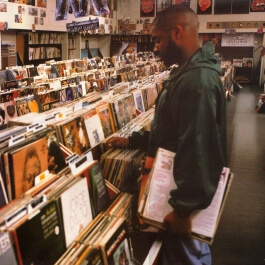
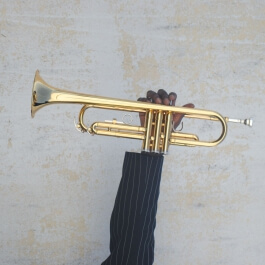
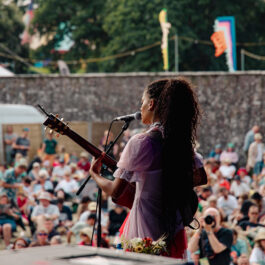
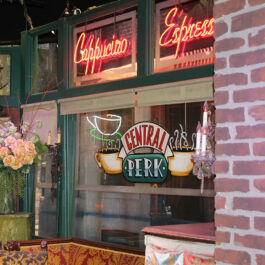
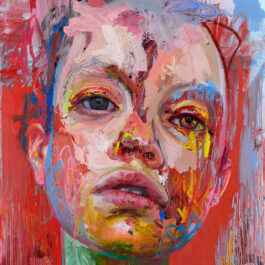






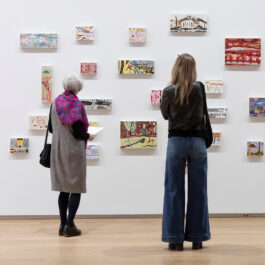

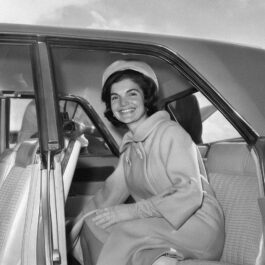
Sorry, the comment form is closed at this time.